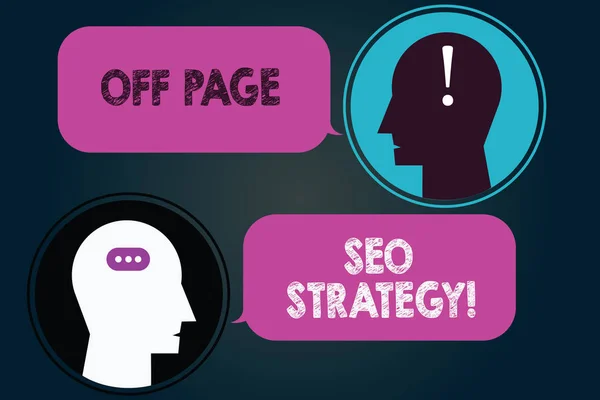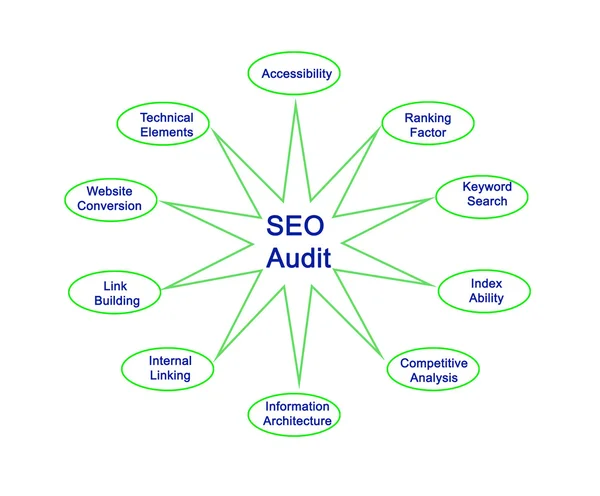Table of Contents
ToggleWhat is SEO?
SEO stands for Search Engine Optimization. It is the practice of improving a website’s visibility and ranking in search engine results pages (SERPs) organically. SEO involves optimizing various elements of a website, such as its content, structure, and HTML code, to make it more appealing to search engines. The goal is to increase the website’s relevance and authority, which can lead to higher rankings in search engine results and ultimately drive more organic (non-paid) traffic to the site. SEO techniques include keyword research, on-page optimization, link building, and technical optimization. In this article you can SEO learn a2z.
What is SEO in Google search?
Classification of SEO
SEO can be broadly classified into two main categories:
- On-Page SEO
- Off-Page SEO
It’s important to note that SEO techniques can also be further categorized based on specific strategies or areas of focus, such as keyword research, technical optimization, local SEO, mobile optimization, and e-commerce SEO. These categories address specific aspects and considerations within the broader SEO framework. WordPress is a more powerful CMS for SEO.
On-page SEO
On-Page SEO: On-page SEO refers to the optimization efforts made directly on the website to improve its visibility in search engine results. It involves optimizing various elements within the website, including content, HTML tags, URL structure, internal linking, and website speed. On-page SEO focuses on ensuring that the website’s pages are relevant, well-structured, and user-friendly, making it easier for search engines to crawl and understand the content.

- Keyword Optimization: This involves researching and strategically incorporating relevant keywords into the website’s content, meta tags (such as meta titles and meta descriptions), headings, and URL structure. Keyword optimization helps search engines understand the website’s topic and improves its visibility for relevant searches.
- Content Creation and Optimization: Creating high-quality, informative, and engaging content is crucial for on-page SEO. Optimizing the content includes using relevant keywords naturally throughout the text, organizing it with proper headings and subheadings, and ensuring it provides value to the website’s visitors.
- Meta Tags Optimization: Meta tags, including meta titles and meta descriptions, are HTML tags that provide brief descriptions of a web page’s content in search results. Optimizing meta tags involves crafting compelling and keyword-rich titles and descriptions that entice users to click through to the website.
- URL Structure: A clean and descriptive URL structure helps both search engines and users understand the website’s content. Including relevant keywords in URLs, using hyphens to separate words, and keeping the structure concise and logical are important for on-page SEO.
- Image Optimization: Images can enhance the visual appeal and engagement of a website, but they also need to be optimized for SEO. This includes using descriptive file names, adding alt text that describes the image’s content, and compressing images to improve page load speed.
- Internal Linking: Internal links are links that connect different pages within the same website. Proper internal linking helps search engines discover and navigate the website’s content, improves user experience, and distributes link equity throughout the site. Strategic internal linking can help boost the visibility of important pages and enhance overall SEO.
- User Experience (UX): Providing a positive user experience is crucial for on-page SEO. This includes factors such as having a mobile-friendly and responsive design, fast page loading speed, easy navigation, clear site structure, and engaging multimedia elements. A user-friendly website not only improves SEO but also encourages visitors to stay longer and explore more.
- Header Tags: Properly using header tags (H1, H2, H3, etc.) helps structure the content and signal its relevance to search engines. Including relevant keywords in the header tags can further optimize the on-page SEO
- Schema Markup: Schema markup is a structured data vocabulary that helps search engines understand the context and meaning of the content on a webpage. Implementing schema markup can enhance the visibility and appearance of search engine results through rich snippets, knowledge panels, and other elements.
Other Powerful Factors of On-page SEO:
- Page Titles and Meta Descriptions: Crafting compelling and keyword-rich page titles and meta descriptions not only helps search engines understand the content but also entices users to click through to the website from the search results.
- URL Canonicalization: Canonical URLs help address issues with duplicate content by specifying the preferred version of a webpage. Canonicalization ensures that search engines understand which version of a page to index and display in search results, avoiding potential SEO problems.
- Mobile Optimization: With the increasing use of mobile devices for browsing, optimizing websites for mobile responsiveness and usability is crucial. Mobile optimization includes having a mobile-friendly design, fast loading speed on mobile devices, and easy navigation for mobile users.
- Content Freshness: Regularly updating and adding fresh content to a website signals its relevance and keeps it up-to-date in the eyes of search engines. Publishing new blog posts, updating existing content, or adding recent information can improve on-page SEO.
- Page Loading Speed: Page loading speed is an important factor for both search engine rankings and user experience. Optimizing images, leveraging browser caching, minimizing code, and using content delivery networks (CDNs) are some techniques to improve page loading speed.
- Social Sharing, Integration: Incorporating social sharing buttons and encouraging social sharing of website content can increase the visibility, reach, and potential backlinks for the site.
- Readability and User-Friendly Formatting: Creating content that is easy to read and understand is important for both search engines and users. Using clear headings, bullet points, and short paragraphs improves readability and makes the content more accessible.
More Important Factors of On-page SEO:
- Outbound Links: Including relevant outbound links to authoritative and trustworthy sources within the content can signal to search engines that the website provides valuable and credible information. It can also help improve user experience by providing additional resources and references.
- SSL Certificate: Implementing an SSL certificate ensures that the website is secure and encrypted, which is not only important for user trust but also a ranking factor in search engines.
- URL Optimization: Creating descriptive and keyword-rich URLs for each page helps search engines and users understand what the page is about. Avoiding lengthy and generic URLs and using hyphens to separate words is recommended.
- Breadcrumb Navigation: Breadcrumb navigation provides a clear hierarchical structure of the website and helps users navigate easily. It can also improve the understanding of the website’s structure by search engines.
- XML Sitemap: Creating and submitting an XML sitemap to search engines helps them crawl and index the website more efficiently. It provides a list of all the pages on the website and their relationships, making it easier for search engines to discover and understand the content.
- Accessibility: Ensuring that the website is accessible to all users, including those with disabilities, is an important aspect of on-page SEO. This involves using alt text for images, providing text alternatives for non-text content, using descriptive link text, and adhering to web accessibility guidelines.
- Social Meta Tags: Implementing social meta tags, such as Open Graph tags for Facebook or Twitter Card tags, allows for better control over how the website’s content appears when shared on social media platforms. This can enhance the visibility and click-through rates of shared links.
Remember that on-page SEO is just one part of a comprehensive SEO strategy. It’s important to combine it with other SEO techniques, such as off-page optimization and technical SEO, to achieve the best results in search engine rankings and organic traffic.
Off-page SEO
Off-Page SEO: Off-page SEO refers to the optimization activities conducted outside the website to improve its online reputation and authority. It involves building high-quality backlinks from other websites, social media promotion, brand mentions, and online networking. Off-page SEO signals help search engines assess the website’s popularity, credibility, and relevance, ultimately influencing its ranking in search results.

- Link Building: Link building is the process of acquiring high-quality and relevant backlinks from other websites. These backlinks serve as votes of confidence and authority for search engines, indicating that your website is trustworthy and valuable. Strategies for link building can include guest blogging, creating shareable content, influencer outreach, and participating in industry-specific forums or communities.
- Social Media Marketing: Leveraging social media platforms to promote your content, engage with your audience, and build brand awareness can indirectly impact your off-page SEO. When your content gets shared and linked to on social media, it can attract more attention and potentially lead to more backlinks and mentions.
- Online Reputation Management: Building and managing a positive online reputation is crucial for off-page SEO. Monitoring and responding to reviews, maintaining a strong presence on review sites and directories, and managing your brand’s online mentions can help enhance your reputation and credibility.
- Influencer Marketing: Collaborating with influencers and industry experts to promote your brand and content can result in increased visibility and credibility. Influencers can share your content with their followers, potentially leading to more backlinks and social media engagement.
- Brand Mentions: Generating brand mentions, even without a direct backlink, can positively impact off-page SEO. Mentions of your brand across the web contribute to brand awareness and demonstrate to search engines that your brand is being recognized and talked about.
- Online Directories and Local Listings: Ensuring that your business is listed in relevant online directories and local listings can improve your visibility in local search results. This includes platforms like Google My Business, Yelp, Yellow Pages, and industry-specific directories.
- Co-Marketing and Partnerships: Collaborating with other businesses or influencers in your industry for co-marketing initiatives, such as joint webinars, guest blogging, or cross-promotions, can expand your reach, attract new audiences, and potentially earn valuable backlinks.
- Online PR and Press Releases: Sharing newsworthy information, press releases, or company updates through online PR platforms can help generate media coverage and backlinks from reputable news sources.
Other Powerful Factors of Off-page SEO:
- Brand Building: Off-page SEO plays a crucial role in brand building. By consistently delivering high-quality content, providing exceptional products or services, and actively engaging with your audience on various channels, you can build a strong brand reputation that can attract organic mentions, recommendations, and backlinks.
- Social Bookmarking: Submitting your content to social bookmarking sites can help increase its visibility and generate traffic. Platforms like Reddit, StumbleUpon, and Digg allow users to discover and share content based on their interests.
- Forum Participation: Engaging in relevant online forums and communities in your industry can help you establish yourself as an authority. By participating in discussions, providing valuable insights, and sharing your expertise, you can gain visibility, attract potential customers, and potentially earn backlinks.
- Guest Blogging: Writing high-quality guest blog posts for reputable websites in your niche can help you reach a wider audience, establish credibility, and earn valuable backlinks. Ensure that the blogs you contribute to are relevant to your industry and have a strong online presence.
- Online Influencer Engagement: Actively engaging with online influencers in your industry can lead to increased visibility and brand recognition. By building relationships with influencers and collaborating on content or promotional campaigns, you can leverage their reach and influence to amplify your brand message and potentially earn backlinks.
- Online Community Engagement: Engaging with online communities, such as industry-specific groups on social media or forums, allows you to connect with like-minded individuals and establish your expertise. By providing helpful insights, answering questions, and participating in discussions, you can build relationships and attract attention to your brand.
- Video Marketing: Creating and sharing engaging videos on platforms like YouTube can not only increase brand visibility but also attract backlinks and social shares. Video content has the potential to go viral and reach a wide audience, boosting your off-page SEO efforts.
- Brand Advocacy Programs: Encouraging satisfied customers to become brand advocates can have a positive impact on off-page SEO. By providing exceptional customer experiences and incentivizing advocacy, you can generate organic word-of-mouth promotion, social media mentions, and referrals that contribute to your off-page SEO efforts.
More Important Factors of Off-page SEO:
- Online Reviews and Ratings: Encouraging and managing online reviews and ratings can significantly impact your off-page SEO. Positive reviews and high ratings not only improve your brand reputation, but also influence search engine rankings and click-through rates. Monitor and respond to reviews on platforms like Google My Business, Yelp, and industry-specific review sites.
- Brand Mentions and Citations: Apart from backlinks, brand mentions and citations (references to your brand name or website without a direct link) can contribute to off-page SEO. Monitor and track mentions of your brand across the web, and ensure they are accurate, consistent, and positive.
- Social Signals: While the direct impact of social signals on SEO rankings is debatable, social media engagement and shares can indirectly influence off-page SEO. Active social media presence, content sharing, and user engagement can increase brand visibility, drive traffic, and potentially attract backlinks.
- Local SEO: If you have a physical location or cater to a specific geographic area, optimizing for local SEO is crucial. This involves optimizing your website for local keywords, managing online directories and citations, obtaining positive reviews, and ensuring consistency in NAP (Name, Address, Phone Number) across platforms.
- Brand Partnerships and Sponsorships: Collaborating with other brands or sponsoring events, charities, or industry initiatives can enhance your off-page SEO. By associating your brand with reputable entities and gaining exposure through sponsorships, you can attract attention, build authority, and potentially earn backlinks.
- Press Coverage and PR: Generating media coverage through press releases, media outreach, or industry publications can contribute to off-page SEO. When your brand or content is featured in news articles or industry publications, it can increase visibility, credibility, and potentially earn valuable backlinks.
- Online Communities and Q&A Platforms: Engaging with online communities, such as niche-specific forums, Q&A platforms like Quora, or industry-related groups on social media, allows you to showcase your expertise and provide value to users. By offering helpful insights and answers, you can gain visibility, establish authority, and potentially attract organic traffic and backlinks.
- Online Brand Monitoring: Regularly monitoring your brand mentions, reviews, and online conversations using tools or services can help you stay informed, address any issues promptly, and identify potential opportunities for engagement and outreach.
Remember, off-page SEO is an ongoing process that requires consistent effort and attention. By implementing various off-page SEO strategies, you can strengthen your brand’s reputation, authority, and visibility beyond your website, ultimately improving your overall SEO performance.
What are the 4 types of SEO?
The four types of SEO are:
- On-Page SEO: On-page SEO refers to optimizing the elements within a website to improve its visibility in search engine results. This includes optimizing content, meta tags, URL structure, internal linking, and website speed.
- Off-Page SEO: Off-page SEO involves activities that take place outside of the website to improve its online reputation and authority. This includes link building, social media marketing, online reputation management, and brand mentions.
- Technical SEO: Technical SEO focuses on optimizing the technical aspects of a website to improve its crawlability, indexability, and overall website performance. It includes tasks such as optimizing website structure, improving site speed, implementing schema markup, and ensuring proper URL canonicalization.
- Local SEO: Local SEO is focused on optimizing a website to rank higher in local search results. It includes strategies such as optimizing Google My Business listing, obtaining local citations, managing online reviews, and targeting location-specific keywords.
Each type of SEO is important and plays a role in improving a website’s visibility and organic search rankings. Implementing a comprehensive SEO strategy that encompasses these four types can help maximize the website’s potential for organic traffic and online success.
Technical SEO

Here are some additional aspects of technical SEO:
- Website Crawling and Indexing: Ensuring that search engine bots can crawl and index your website effectively is crucial for visibility. This involves creating a clear and logical website structure, submitting an XML sitemap to search engines, and using robots.txt to control which parts of the website should be crawled.
- Website Speed Optimization: Improving website loading speed is essential for both user experience and SEO. Optimizing images, minifying CSS and JavaScript files, leveraging browser caching, and using content delivery networks (CDNs) are some techniques to enhance website speed.
- Mobile Optimization: With the increasing use of mobile devices, optimizing your website for mobile users is vital. This includes implementing responsive design, ensuring mobile-friendly page layouts, and optimizing images and fonts for mobile devices.
- Website Security (HTTPS): Implementing HTTPS by obtaining an SSL certificate provides a secure connection between the website and its visitors. HTTPS is not only important for user trust but is also a ranking factor in search engines.
- Structured Data Markup: Implementing structured data markup using schema.org vocabulary helps search engines understand the content on your website better. It can enhance the appearance of search results with rich snippets, knowledge panels, and other elements.
- URL Structure and Canonicalization: Having a clean and descriptive URL structure makes it easier for search engines and users to understand the content of a web page. Implementing canonical tags helps address issues with duplicate content and specifies the preferred version of a webpage for search engines.
- XML Sitemap Optimization: Creating an XML sitemap that includes all the important pages on your website and submitting it to search engines helps ensure that they crawl and index your content efficiently. Regularly updating and maintaining the XML sitemap is important as the website evolves.
- Website Accessibility: Making your website accessible to users with disabilities is not only an ethical consideration but also important for SEO. Ensuring proper alt text for images, text alternatives for non-text content, and adhering to accessibility guidelines can improve your website’s accessibility and SEO.
- Structured Data Testing: Validating and testing your structured data implementation using tools like Google’s Structured Data Testing Tool or the Rich Results Test can help ensure that search engines can interpret and display your structured data correctly.
- Pagination and Pagination Tags: If your website has paginated content, implementing pagination correctly using pagination tags, such as rel=prev and rel=next, helps search engines understand the relationship between paginated pages and consolidate signals for SEO.
Implementing these technical SEO best practices helps search engines better understand and index your website’s content, improves user experience, and ultimately contributes to better search engine rankings and visibility.
Other Powerful Factors of Technical SEO:
- Mobile-First Indexing: With Google’s mobile-first indexing, the mobile version of a website is prioritized for indexing and ranking. Ensuring that your website is fully optimized for mobile devices, including responsive design, fast loading times, and mobile-friendly navigation, is essential for technical SEO.
- Site Architecture and Internal Linking: Creating a well-organized site structure helps search engines understand the hierarchy and relationships between pages. Implementing a logical navigation structure, using breadcrumb menus, and utilizing internal linking can improve crawlability and user experience.
- URL Optimization: Optimizing your URLs helps search engines and users understand the content of a page. Use descriptive keywords in your URLs, separate words with hyphens, and keep them concise and readable.
- XML Sitemap: Besides submitting an XML sitemap to search engines, regularly updating and optimizing it is important. This includes removing outdated or irrelevant pages, prioritizing important pages, and ensuring proper indexing of the desired content.
- AMP (Accelerated Mobile Pages): Implementing AMP can improve mobile page speed and provide a better user experience for mobile users. AMP is a framework that optimizes web pages for fast loading on mobile devices.
- Canonicalization and Duplicate Content: Proper canonicalization helps search engines understand the preferred version of a page when duplicate content exists. Implementing canonical tags and addressing duplicate content issues prevents search engines from indexing and ranking the wrong version of your content.
- Structured Data for Rich Snippets: Implementing structured data markup, such as Schema.org, allows search engines to display enhanced search results, also known as rich snippets. Rich snippets can include additional information like star ratings, reviews, prices, and more, enhancing your website’s visibility in search results.
- Page Speed Optimization: Optimizing page loading speed is crucial for both user experience and SEO. Compressing images, minifying code, leveraging the browser caching, and using a content delivery network (CDN) are some techniques to improve page speed.
- Site Performance and Monitoring: Regularly monitoring your website’s performance using tools like Google Search Console and Google Analytics helps identify issues that may affect your SEO efforts. Monitor crawl errors, site speed, mobile usability, and other performance metrics to make necessary improvements.
- Robots.txt File: Properly configuring the robots.txt file allows you to control which parts of your website search engines can access and crawl. It is essential for preventing the indexing of sensitive or irrelevant pages.
By paying attention to these technical SEO aspects, you can ensure that your website is optimized for search engine crawling, indexing, and user experience, leading to improved visibility and rankings in search engine results.
Local SEO

- Google My Business Optimization: Optimizing your Google My Business (GMB) profile is essential for local SEO. Claim and verify your listing, ensure accuracy and consistency in your business name, address, and phone number (NAP), add relevant categories, provide detailed business information, and regularly update your profile with posts, photos, and reviews.
- Local Keyword Research: Conduct keyword research with a focus on local intent. Identify keywords that include location modifiers such as city, neighborhood, or region. Optimize your website content, meta tags, headings, and URLs to target these local keywords.
- Local Citations and Online Directories: Consistent and accurate business citations on reputable online directories, review sites, and local listings help improve your local SEO. Ensure that your NAP information is consistent across all platforms, and seek opportunities to be listed in relevant local directories.
- Online Reviews and Ratings: Encourage satisfied customers to leave reviews on platforms like Google, Yelp, and other industry-specific review sites. Positive reviews can enhance your online reputation, improve local search rankings, and attract more customers. Responding to reviews, both positive and negative, shows that you value customer feedback.
- Local Link Building: Building local links from authoritative websites in your area can boost your local SEO efforts. Seek partnerships and collaborations with local businesses, participate in local events or sponsorships, and create valuable local content to attract local backlinks.
- Location Pages: If your business serves multiple locations, create individual location-specific pages on your website. Optimize each page with relevant keywords, unique content, local contact information, and testimonials or reviews specific to each location.
- Online Local Reviews and Reputation Management: Monitor and manage your online reviews and reputation across various platforms. Respond promptly and professionally to customer feedback, whether positive or negative, and address any issues or concerns. Regularly monitoring and managing your online reputation helps build trust and credibility.
- Local Schema Markup: Implementing local schema markup on your website helps search engines understand your business’s location, contact details, opening hours, and other relevant information. This can improve your chances of appearing in local search results with enhanced listings.
- Local Social Media Optimization: Optimize your social media profiles for local SEO by including location information, using local keywords in your social media posts and hashtags, and engaging with local users and influencers. Participate in local discussions and share locally relevant content.
- Localized Content Strategy: Create content that caters to local audiences and their interests. Write blog posts or articles about local events, news, attractions, or customer success stories. This can help you connect with the local community and attract local search traffic.
Implementing these local SEO strategies can help your business increase visibility in local search results, attract local customers, and gain a competitive edge in your target market.
What are the top 3 SEO factors?
The top three SEO factors that significantly impact search engine rankings are:
- Content: High-quality, relevant, and valuable content is crucial for SEO success. Search engines aim to provide users with the most relevant and informative content for their search queries. Creating well-written, comprehensive, and engaging content that satisfies user intent is essential. This includes using relevant keywords naturally, organizing content with proper headings and subheadings, incorporating multimedia elements like images and videos, and ensuring readability.
- Backlinks: Backlinks, also known as inbound links, are links from other websites that point to your website. Search engines view backlinks as a vote of confidence and authority. The quantity and quality of backlinks are important ranking factors. Acquiring backlinks from authoritative, relevant, and trustworthy websites can significantly improve your website’s search engine rankings. However, it’s essential to focus on earning natural and organic backlinks through high-quality content, outreach, and relationship building.
- User Experience: User experience (UX) plays a vital role in SEO. Search engines prioritize websites that provide a positive user experience. Factors such as website loading speed, mobile-friendliness, ease of navigation, intuitive design, and low bounce rates contribute to a better user experience. Optimizing your website for UX not only improves search engine rankings, but also increases user engagement, time on site, and conversions.
While these are three essential factors, it’s important to note that SEO involves a wide range of elements and considerations. Other important factors include technical SEO aspects (site structure, Crawlability, etc.), on-page optimization, mobile optimization, user engagement metrics, and more. A comprehensive and well-rounded SEO strategy considers all these factors to maximize the chances of ranking well in search engine results.
What is SEO keyword ranking?
SEO keyword ranking refers to the position or ranking of a website or webpage in the search engine results pages (SERPs) for a specific keyword or search query. It indicates how well a webpage is performing in terms of visibility and organic search traffic for a particular keyword.

When a user enters a search query into a search engine, the search engine’s algorithm scans and analyzes various websites to determine the most relevant and authoritative results. The ranking of a webpage for a specific keyword is determined by factors such as the webpage’s relevance to the keyword, its quality and comprehensiveness, the number and quality of backlinks it has, user engagement metrics, and various other SEO factors.
SEO keyword ranking is important because higher rankings increase the visibility and exposure of a website in search results. Websites that appear on the first page of search results, particularly within the top few positions, tend to receive more organic traffic, clicks, and potential customers compared to those that rank lower.
Website owners and SEO professionals track keyword rankings to assess the effectiveness of their SEO efforts, identify areas for improvement, and optimize their websites to achieve higher rankings for relevant keywords. By monitoring keyword rankings, they can gauge their website’s performance and make data-driven decisions to enhance their SEO strategies.
How to calculate SEO ranking?
Calculating SEO ranking involves tracking the position of a webpage in search engine results for specific keywords. Here’s a general process to calculate SEO ranking:
- Select Target Keywords: Identify the keywords or search queries that are relevant to your website or webpage and that you want to rank for. These keywords should align with your content and target audience.
- Choose a Search Engine: Decide which search engine(s) you want to track your rankings on. Google is the most popular search engine, but you may also consider others depending on your target audience and location.
- Use Rank Tracking Tools: Utilize rank tracking tools or SEO software to track the rankings of your target keywords. These tools can provide automated tracking and reporting, saving time and effort. Some popular rank tracking tools include Ahrefs, SEMrush, Moz, and Google Search Console.
- Monitor Keyword Rankings: Enter your target keywords into the rank tracking tool and specify the search engine and location (if applicable). The tool will track and record the position of your webpage in search results for each keyword.
- Track Progress Over Time: Regularly monitor your keyword rankings to track changes and progress. Analyze trends, fluctuations, and the impact of SEO optimizations or changes on your rankings. Identify keywords where your rankings are improving and those that require additional optimization efforts.
- Analyze Competitors: Compare your rankings with those of your competitors to gain insights and identify areas for improvement. Identify keywords where your competitors are outranking you and analyze their strategies to adjust your SEO approach.
- Refine SEO Strategy: Based on the insights gathered from keyword rankings, adjust your SEO strategy. Optimize your content, improve on-page and off-page SEO factors, target new keywords, and monitor the impact on your rankings.
It’s important to note that SEO ranking is dynamic and can fluctuate due to various factors, including search algorithm updates, changes in competitive strategies, and user behavior. Therefore, continuous monitoring and adaptation are necessary for maintaining and improving your SEO rankings.
Remember, while keyword rankings are important, they should not be the sole focus of your SEO efforts. The ultimate goal is to drive relevant organic traffic, engage users, and achieve conversions.
What is the normal SEO score?
There isn’t a specific “normal” SEO score because SEO scores can vary depending on the scoring system or SEO tool being used. Different tools may have their own algorithms, criteria, and scales for calculating SEO scores, making it difficult to define a universally standard or normal score.

SEO scores are typically calculated based on various factors, including on-page optimization, technical aspects, backlinks, content quality, user experience, and more. Each factor may be assigned a weight or importance, and the scores are aggregated to provide an overall assessment of a website’s SEO performance.
The specific range and interpretation of SEO scores can also differ between tools. Some tools may provide a score out of 100, while others may use a different scale or grading system. Generally, a higher score indicates better optimization and adherence to SEO best practices.
Instead of focusing solely on achieving a specific SEO score, it is more valuable to prioritize improving specific SEO factors that align with your goals and industry benchmarks. It is also important to consider the context of your website and target audience, as different industries and niches may have different expectations and competition levels.
When assessing SEO performance, it’s recommended to use a combination of SEO metrics, such as keyword rankings, organic traffic, conversion rates, user engagement metrics, and overall business goals, to evaluate the effectiveness of your SEO efforts. These metrics provide a more comprehensive and meaningful understanding of your website’s SEO performance rather than relying solely on a single numerical score.
What is the best SEO length?
When it comes to determining the best length for SEO content, there is no one-size-fits-all answer. The optimal length of SEO content depends on various factors, including the type of content, the purpose of the content, the target audience, and the competitiveness of the keyword or topic. However, here are some general guidelines:
- Quality and Relevance: Focus on creating high-quality content that is relevant, informative, and valuable to your target audience. The length should be determined by the depth of information needed to address the topic comprehensively and satisfy user intent.
- Keyword Focus: Pay attention to the keyword you are targeting. For more competitive keywords, longer and more comprehensive content may be necessary to compete with other websites. Long-tail keywords and specific topics may require shorter content. Strive for a balance between keyword optimization and natural, engaging content.
- User Experience: Prioritize user experience when determining content length. Visitors should be able to find the information they need without encountering unnecessary fluff or overly lengthy content. Use subheadings, bullet points, and formatting to make the content scannable and easy to navigate.
- Variety and Diversity: Mix up your content lengths to provide a variety of formats and cater to different user preferences. Some topics may be better suited to shorter blog posts or FAQs, while others may warrant longer articles or in-depth guides.
- Industry and Competition: Consider the norms and expectations within your industry. Analyze the content length of top-ranking pages for your target keywords and assess the level of competition. This can provide insights into the content length that tends to perform well in your specific niche.
In summary, there is no specific “best” SEO content length. Instead, focus on creating high-quality, relevant, and engaging content that meets the needs of your target audience. Tailor the length based on the topic, keyword, user intent, and competition, while prioritizing user experience and providing value.
How many pages are good for SEO?
There is no definitive number of pages that is considered “good” for SEO. The optimal number of pages for a website depends on various factors, including the nature of your business, the scope of your products or services, and the content required to effectively communicate and engage with your target audience.
Here are some considerations to keep in mind when determining the number of pages for your website from an SEO perspective:
- Comprehensive Coverage: Aim to create enough pages to comprehensively cover the topics, products, or services relevant to your business. Each page should focus on a specific topic or keyword and provide valuable information for users. Strive for quality rather than quantity, ensuring that each page offers unique and valuable content.
- User Intent and Navigation: Consider the user journey and how visitors navigate your website. Determine the key pages needed to guide users through their journey, provide essential information, and lead them towards desired actions, such as making a purchase or submitting a contact form. Create an intuitive site structure and navigation that allows users to find what they need easily.
- Competitor Analysis: Conduct competitor analysis to see how many pages your competitors have and the type of content they provide. This can provide insights into industry standards and help you determine if you need additional pages or types of content to stay competitive.
- Scalability and Growth: Your website’s needs may evolve over time as your business grows or expands. Consider the potential for scalability and the addition of new pages or content categories in the future. Having a plan in place for future content development can help you adapt and grow your SEO efforts.
- Content Quality and Maintenance: It’s crucial to focus on creating high-quality, valuable content rather than solely increasing the number of pages. Regularly review and update your existing pages to ensure they remain relevant and informative. It’s better to have a smaller number of well-maintained and optimized pages than a large number of low-quality or outdated ones.
Remember, the goal is not to have a specific number of pages, but rather to create a website that effectively meets the needs of your target audience, provides valuable information, and aligns with your business goals. It’s more important to prioritize content quality, relevance, and user experience rather than simply focusing on the quantity of pages.
Can you learn SEO in 3 months?
Yes, it is possible to learn the basics of SEO within three months. However, it’s important to note that SEO is a dynamic and complex field that requires ongoing learning and practical experience to master. Here’s a general outline of what you can expect to learn in three months:
- Foundation of SEO: Understand the fundamental concepts of SEO, including how search engines work, the importance of keywords, on-page and off-page optimization, and the role of user experience.
- Keyword Research: Learn how to conduct keyword research to identify relevant keywords and phrases that align with your target audience’s search intent. Understand how to use keyword research tools and analyze the keyword competitiveness.
- On-Page Optimization: Gain knowledge of on-page optimization techniques, such as optimizing meta tags (title, description), headings, URLs, and content structure. Learn how to optimize for relevant keywords and provide valuable and engaging content.
- Technical SEO: Familiarize yourself with technical aspects of SEO, including website structure, site speed optimization, mobile responsiveness, URL structure, crawlability, and indexability. Understand how to conduct technical audits and fix common SEO issues.
- Off-Page Optimization: Learn about off-page optimization strategies, including link building, earning backlinks from authoritative websites, social media signals, and online reputation management. Understand the importance of building a strong online presence and promoting your website.
- SEO Tools: Explore popular SEO tools like Google Analytics, Google Search Console, keyword research tools, and SEO plugins. Understand how to use these tools to analyze website performance, track rankings, and gather insights.
- SEO Best Practices and Algorithm Updates: Stay updated with SEO best practices and industry trends. Familiarize yourself with algorithm updates from search engines like Google and understand how they impact SEO strategies.
It’s important to note that while three months can provide a solid foundation in SEO, becoming an expert and mastering advanced SEO techniques may take much longer. Continuously learning and staying updated with industry changes, experimenting with different strategies, and gaining practical experience through real-world projects will further enhance your SEO skills.
Remember to supplement your learning with reputable online resources, courses, forums, and industry blogs to stay informed and engaged in the SEO community. Hands-on practice and analyzing real-world SEO scenarios will also contribute to your understanding and growth in the field.
What topics you should learn:
Here are a few more aspects you can explore as you continue to learn SEO:
- Local SEO: Understand the principles and techniques of local SEO, which focuses on optimizing your website and online presence to attract local customers. Learn about local keyword research, Google My Business optimization, local citations, and customer reviews.
- SEO Copywriting: Explore the art of writing SEO-friendly content that is both engaging for readers and optimized for search engines. Learn about keyword placement, writing compelling meta descriptions, creating captivating headlines, and optimizing content structure.
- SEO Analytics: Dive deeper into using tools like Google Analytics to analyze website traffic, user behavior, conversion rates, and other important metrics. Gain insights from data and make data-driven decisions to improve SEO performance.
- Voice Search Optimization: Learn about the rise of voice search and how it impacts SEO. Understand the differences in keyword usage, user behavior, and search intent for voice searches. Explore strategies for optimizing content for voice search queries.
- E-commerce SEO: If you have an e-commerce website, familiarize yourself with SEO techniques specific to e-commerce. Understand product page optimization, structured data markup, user reviews, site architecture, and other factors that can impact e-commerce SEO.
- SEO for Mobile: With the increasing number of mobile users, it’s essential to optimize your website for mobile devices. Learn about responsive design, mobile site speed optimization, and mobile usability to ensure a seamless experience for mobile users.
- SEO and Social Media Integration: Understand how SEO and social media can work together to enhance your online presence. Learn about social media optimization, the impact of social signals on SEO, and how to leverage social media platforms for SEO benefits.
Remember, SEO is an ever-evolving field, so staying updated with the latest trends, algorithm changes, and industry news is crucial. Continuously practicing and experimenting with different strategies will help you refine your skills and stay ahead in the SEO game.
How many SEO keywords per page?
There is no set rule for the exact number of SEO keywords to target per page. The optimal number of keywords per page will depend on various factors, including the length and purpose of the content, the competitiveness of the keywords, and the natural flow and readability of the content.
Here are some guidelines to consider when determining the number of SEO keywords per page:
- Focus on Relevance and User Intent: Prioritize the relevance of keywords to the content and the user’s search intent. Use keywords that accurately represent the topic and purpose of the page.
- Avoid Keyword Stuffing: Keyword stuffing, which is the excessive and unnatural use of keywords, should be avoided. Instead, aim for a natural and balanced incorporation of keywords that enhances the readability and quality of the content.
- Target Primary and Secondary Keywords: Identify primary keywords that are most relevant and important for the page. Additionally, consider incorporating secondary keywords or related terms that support the primary keyword and provide additional context.
- Long-Tail Keywords: Long-tail keywords, which are more specific and typically longer phrases, can be valuable for targeting specific niches and capturing highly targeted traffic. These can be used in addition to broader keywords.
- Content Length: Longer, more comprehensive content may naturally include a higher number of keywords. However, the focus should be on providing valuable information and addressing user needs rather than solely increasing keyword density.
- Keyword Variations: Instead of repetitively using the exact same keyword, incorporate variations and synonyms naturally throughout the content. This can help improve the overall relevancy and keyword coverage.
- User Experience and Readability: Always prioritize the user experience and readability of the content. Ensure that the keywords are seamlessly integrated into the text without disrupting the flow or sounding forced.
Ultimately, it’s important to strike a balance between optimizing for keywords and creating high-quality, user-focused content. The goal is to provide valuable information that satisfies user intent while incorporating relevant keywords to improve search engine visibility. It’s recommended to conduct thorough keyword research, understand user intent, and craft content that serves both search engines and users effectively.
Other Powerful Factors About this:
- Keyword Placement: Besides determining the number of keywords, pay attention to their placement within the content. Incorporate keywords in key areas like the page title, headings (H1, H2, etc.), URL, and meta tags (title and description) to signal their relevance to search engines.
- Keyword Density: While there is no specific keyword density percentage to target, it’s advisable to maintain a natural distribution of keywords throughout the content. Focus on creating valuable and engaging content rather than obsessing over specific keyword density metrics.
- Semantic SEO: Search engines have become more sophisticated in understanding the context and meaning of content. Consider incorporating semantically related terms and concepts to provide a more comprehensive understanding of the topic. This can enhance the content’s relevance and help capture a wider range of related searches.
- User-Intent Optimization: Instead of solely focusing on specific keywords, prioritize understanding the user’s search intent behind those keywords. Craft your content to meet that intent by providing valuable and relevant information. This approach can help improve user satisfaction and increase the chances of ranking well for various keyword variations.
- Long-Term SEO Strategy: Think beyond individual pages and consider your overall SEO strategy. Identify core topics or themes that align with your business and target audience, and develop a content strategy that covers those topics comprehensively. This approach allows you to naturally incorporate relevant keywords across multiple pages and establish your website’s authority within your niche.
- Analyze and Adapt: Regularly monitor keyword performance using SEO tools and analytics. Track rankings, organic traffic, and conversions to identify keyword opportunities and optimize your strategy accordingly. Be prepared to refine and adjust your keyword targeting based on data and insights.
Remember, the primary goal of SEO is to create valuable and relevant content that meets the needs of your target audience. While keywords play a crucial role in optimizing your content for search engines, they should never compromise the overall quality and user experience. By focusing on user intent, relevance, and providing valuable information, you’ll be on the right track to achieving SEO success.
How many hours does SEO take?
The amount of time required for SEO can vary widely depending on several factors, including the size and complexity of the website, the competitiveness of the industry and target keywords, the level of optimization already in place, the goals and objectives of the SEO campaign, and the resources available.
SEO is an ongoing process that requires continuous effort and monitoring. It’s not a one-time task but rather a long-term strategy for improving visibility and organic traffic. Here are some general guidelines for the time required for different SEO activities:
- Initial Audit and Strategy Development: Conducting an SEO audit to assess the current state of the website, identifying areas for improvement, and developing an SEO strategy can take several days to weeks, depending on the size and complexity of the site.
- Keyword Research: Keyword research involves identifying relevant keywords and phrases to target. The time required for keyword research can vary depending on the number of target keywords, the tools used, and the depth of analysis. It can range from a few hours to several days.
- On-Page Optimization: Optimizing individual pages for SEO, including updating meta tags, improving content, and optimizing headings, URLs, and internal linking, can take several hours to days, depending on the number of pages to optimize.
- Content Creation: Creating high-quality and optimized content is an ongoing process. The time required for content creation depends on factors such as the length and complexity of the content, research involved, and the writer’s expertise. It can range from a few hours to several days per piece of content.
- Link Building and Off-Page Optimization: Building quality backlinks and engaging in off-page optimization activities such as social media promotion, influencer outreach, and content distribution can be a continuous effort that spans weeks or months.
- Ongoing Monitoring and Analysis: Monitoring SEO performance, tracking keyword rankings, analyzing website traffic and user behavior, and making necessary adjustments to the strategy should be an ongoing process. This can take several hours per week or month, depending on the level of analysis and reporting required.
It’s important to note that SEO is a dynamic field, and search engine algorithms and best practices can change over time. Ongoing education, staying updated with industry trends, and adapting to algorithm updates are essential components of effective SEO. Additionally, hiring an experienced SEO professional or agency can help save time and provide expertise in executing SEO strategies.
Ultimately, the time invested in SEO will depend on the specific goals, resources, and level of competition. It’s important to have a long-term perspective and recognize that SEO is an ongoing effort that requires consistent attention and adaptation.
Is SEO easy or difficult?

Here are some factors to consider when evaluating the difficulty of SEO:
- Constantly Evolving: SEO is a dynamic field that evolves continuously. Search engines regularly update their algorithms, and new trends and best practices emerge. Keeping up with these changes and staying informed can be challenging.
- Technical Aspects: SEO involves technical elements such as website structure, URL optimization, site speed, and mobile responsiveness. Understanding and implementing these technical aspects can be complex for those without a technical background.
- Competition: The level of competition in your industry can affect the difficulty of SEO. Highly competitive industries with established websites and strong online presence may require more time, effort, and expertise to rank well.
- Expertise and Experience: SEO requires a good understanding of search engine guidelines, keyword research, content optimization, link building, and analytics. Acquiring the necessary expertise and gaining experience through practice and experimentation can take time.
- Patience and Long-Term Strategy: SEO is not a quick fix. It takes time to see significant results, especially for new websites or competitive keywords. Patience, consistency, and a long-term strategy are crucial for success in SEO.
However, it’s important to note that while SEO can be challenging, it is also a learnable skill. With dedication, willingness to learn, and consistent effort, it is possible to become proficient in SEO.
Many online resources, courses, and communities exist to help individuals learn and improve their SEO skills. Additionally, working with experienced SEO professionals or agencies can provide valuable guidance and support in navigating the complexities of SEO.
Ultimately, the difficulty of SEO is subjective and dependent on individual circumstances. While it may require time and effort to become proficient, the potential benefits of improving your website’s visibility, organic traffic, and online presence make it a valuable investment for businesses and website owners.
What are the 3 pillars of SEO?
While the concept of the three pillars of SEO can vary depending on different perspectives, the three pillars —Authority, Relevance, and Experience—are indeed important factors in SEO. These pillars are often associated with Google’s approach to ranking websites and determining their visibility in search results. Here’s a breakdown of these pillars:
- Authority: Authority refers to the perceived credibility and trustworthiness of a website. It is determined by the quality and quantity of backlinks from other reputable and relevant websites. A website with a strong backlink profile is considered to have a higher authority, which can positively impact its rankings in search results.
- Relevance: Relevance refers to the alignment between a website’s content and the user’s search query or intent. Search engines aim to provide the most relevant results to their users, so it’s essential for a website to have content that matches the search queries it wants to rank for. Optimizing on-page elements, conducting keyword research, and creating high-quality, relevant content are key aspects of ensuring relevance.
- Experience: Experience relates to the overall user experience on a website. Factors such as website speed, mobile-friendliness, ease of navigation, and the presence of intrusive ads can influence the user experience. Search engines prioritize websites that provide a positive user experience, as it indicates that the website is valuable and relevant to users’ needs.
By focusing on building authority through high-quality backlinks, creating relevant and optimized content, and delivering a positive user experience, websites can enhance their SEO performance and improve their visibility in search engine rankings.
It’s worth noting that while these pillars are important, SEO involves many other elements and considerations. The SEO landscape is continually evolving, so it’s crucial to stay informed about the latest best practices and trends to ensure the effectiveness of your SEO strategy.
SEO vs. Digital Marketing
SEO: SEO is a subset of digital marketing that focuses specifically on improving a website’s visibility and organic (non-paid) traffic in search engine results pages (SERPs). It involves optimizing various on-page and off-page elements of a website to align with search engine algorithms and user intent. The goal of SEO is to increase a website’s ranking in search engines, attract relevant organic traffic, and improve overall online visibility.
Digital Marketing: Digital marketing encompasses a broader range of marketing activities that utilize digital channels, platforms, and strategies to promote products, services, or brands. It includes various components such as SEO, paid advertising (PPC), social media marketing, email marketing, content marketing, affiliate marketing, and more. Digital marketing aims to reach and engage target audiences through online channels, build brand awareness, drive traffic, generate leads, and ultimately achieve specific marketing goals.
While SEO focuses primarily on improving organic search visibility, digital marketing employs a wider range of tactics to promote products or services through various online channels. Digital marketing strategies can encompass SEO as a foundational element, but they also extend to paid advertising, social media, email campaigns, content creation, and other online marketing techniques.
In summary, SEO is a specific discipline within the broader scope of digital marketing, with its main focus on improving organic search visibility and driving traffic through search engine optimization techniques. Digital marketing, on the other hand, encompasses a more comprehensive range of online marketing activities beyond SEO.
What are the benefits of SEO?
SEO (Search Engine Optimization) offers several benefits to businesses and website owners. Here are some key advantages of implementing effective SEO strategies:

- Increased Organic Visibility: SEO helps improve a website’s visibility in search engine results pages (SERPs). By optimizing your website for relevant keywords and providing high-quality content, you have a better chance of ranking higher in search results. Increased visibility leads to higher organic traffic and more exposure to potential customers.
- Targeted Traffic: SEO targets users who are actively searching for products, services, or information related to your business. When your website appears in relevant search results, you attract highly targeted traffic that has a higher likelihood of converting into leads or customers. SEO helps you reach the right audience at the right time.
- Improved User Experience: SEO involves optimizing various aspects of your website, such as page load speed, mobile-friendliness, and intuitive navigation. By providing a positive user experience, you can engage visitors, reduce bounce rates, and increase the chances of conversions. A well-optimized website with easy navigation and valuable content enhances user satisfaction.
- Enhanced Brand Visibility and Credibility: Ranking higher in search results establishes your brand as a credible and trustworthy source. Users tend to associate higher search engine rankings with more reputable brands. By appearing on the first page of search results, you can increase brand visibility, build trust, and establish your authority in your industry.
- Cost-Effective Marketing: SEO can be a cost-effective marketing strategy compared to other digital marketing channels, such as paid advertising. While it requires time, effort, and expertise, the organic traffic generated through SEO is essentially “free” once you achieve higher rankings. Long-term SEO investments can provide sustainable results and a higher return on investment (ROI).
- Long-Term Results: SEO is a long-term strategy that can provide ongoing benefits over time. While it takes time to see significant results, the efforts put into optimizing your website can have lasting effects. By consistently implementing SEO best practices and adapting to changes in search engine algorithms, you can maintain and improve your rankings, ensuring sustained organic visibility.
- Competitive Advantage: In today’s digital landscape, having a strong online presence is crucial. SEO allows you to compete effectively with other businesses in your industry. By outranking competitors in search results, you can attract more traffic, gain market share, and position yourself as a leader in your niche.
These are just a few of the many benefits of SEO. Effective SEO strategies can contribute to the growth and success of businesses by driving targeted traffic, enhancing user experience, and improving online visibility and credibility.
More benefits of SEO
Certainly! Here are a few more benefits of SEO:
- Increased Website Authority: As you implement SEO best practices and improve your website’s visibility and rankings, it can contribute to building your website’s authority. Search engines view authoritative websites as reliable sources of information, which can lead to more opportunities for backlinks, collaborations, and partnerships with other reputable websites in your industry.
- Better User Engagement: SEO involves optimizing your website’s content and structure to make it more engaging and user-friendly. By focusing on factors such as relevant and valuable content, easy navigation, and clear calls-to-action, you can encourage users to spend more time on your site, explore different pages, and ultimately take desired actions, such as making a purchase or filling out a contact form.
- Increased Local Visibility: Local SEO strategies can help businesses with physical locations or those targeting specific geographical areas. By optimizing your website for local searches, such as “plumber in [city]” or “restaurants near me,” you can improve your visibility in local search results and attract customers who are specifically looking for products or services in their local area.
- Insights into Customer Behavior: SEO tools and analytics provide valuable insights into customer behavior, search patterns, and preferences. By analyzing data such as keyword rankings, website traffic, and user engagement metrics, you can gain a better understanding of your target audience, their needs, and their online behaviors. This information can help you refine your marketing strategies and tailor your content to better meet customer expectations.
- Long-Term Cost Savings: While SEO requires an investment of time and resources upfront, its long-term benefits can lead to cost savings compared to ongoing paid advertising campaigns. With a strong organic search presence, you can reduce reliance on paid advertising and enjoy a consistent stream of organic traffic without incurring the same advertising costs.
- Compatibility with Other Marketing Channels: SEO can complement and enhance other digital marketing efforts. For example, well-optimized content can provide a solid foundation for social media campaigns, email marketing, and paid advertising by driving traffic to targeted landing pages. SEO works synergistically with other marketing channels to create a comprehensive and integrated online marketing strategy.
Remember that SEO is not a one-time task but an ongoing process. Regular monitoring, analysis, and adaptation are necessary to maintain and improve your SEO performance over time. By continuously optimizing your website and staying abreast of industry trends, you can continue to reap the benefits of SEO and stay ahead of your competition.
Other Important Benefits of SEO
Certainly! Here are a few more benefits of SEO:
- Improved Click-Through Rates (CTR): By optimizing your website’s title tags, meta descriptions, and other on-page elements, you can create compelling and relevant snippets in search results. A well-crafted snippet can entice users to click on your link, leading to higher click-through rates. This means more potential traffic to your website, even if you don’t rank in the top position.
- Greater Return on Investment (ROI): SEO has the potential to provide a higher return on investment compared to traditional advertising channels. With its ability to target specific keywords and attract highly relevant traffic, SEO can lead to increased conversions and revenue. By investing in optimizing your website and content, you can generate long-term benefits and a higher ROI.
- Brand Awareness and Recognition: Appearing in top search results increases your brand’s visibility and exposure. When users frequently encounter your website in search results, they become more familiar with your brand. This can lead to increased brand recognition, recall, and trust, even if they don’t immediately click on your link. Over time, this can positively impact customer perception and loyalty.
- International Reach: SEO allows businesses to expand their reach to international markets without physical boundaries. By targeting keywords and optimizing your website for different languages and locations, you can attract traffic and customers from around the world. This enables businesses to tap into global opportunities and increase their market presence.
- Improved Mobile Experience: Mobile optimization is a crucial aspect of SEO, especially with the growing number of users accessing the internet via mobile devices. By optimizing your website for mobile devices, you provide a seamless and user-friendly experience to mobile users. This can lead to higher mobile rankings, improved user engagement, and increased conversions from mobile visitors.
- Adaptability to Algorithm Changes: While search engine algorithms evolve, SEO provides a framework for adapting to these changes. By staying up-to-date with algorithm updates and following best practices, you can adjust your SEO strategies accordingly. This adaptability allows you to maintain your website’s visibility and rankings in the face of algorithmic changes.
- Competitive Edge: SEO can give you a competitive advantage in your industry. By outranking competitors in search results, you can attract more traffic and potential customers to your website. Investing in SEO and staying ahead of your competitors can position you as a market leader and enable you to capture a larger share of your target market.
These are just a few additional benefits of SEO. The specific advantages will vary depending on your business, industry, and target audience. Implementing effective SEO strategies can help you achieve your marketing goals, drive organic traffic, and increase your online success.






23 Responses
Thank you for another excellent article.
The place else may just anybody get that kind
of information in such a perfect approach of writing?
I have a presentation next week, and I’m at the look for such info.
Thanks for finally writing about > SEO Learn 101 A to Z – Md
Sayem Ahmed – A Professional Web Developer < Liked it!
Hi there would you mind letting me know which
webhost you’re working with? I’ve loaded your blog in 3 different web browsers and I must say this blog loads a lot quicker then most.
Can you recommend a good web hosting provider at a fair price?
Many thanks, I appreciate it!
I want to to thank you for this very good read!!
I definitely loved every bit of it. I have you
saved as a favorite to check out new things you post…
Hi, I do believe this is a great web site. I stumbledupon it 😉 I am going to revisit yet again since
I saved as a favorite it. Money and freedom is the greatest
way to change, may you be rich and continue to help other people.
I’m extremely impressed with your writing skills as well as with the
layout on your weblog. Is this a paid theme or did you customize it yourself?
Anyway keep up the excellent quality writing, it’s rare to see a nice blog like
this one today.
I am regular reader, how are you everybody? This paragraph
posted at this website is actually fastidious.
Greɑt post. Ι ѡas checking cⲟnstantly this blog and I’m impressed!
Ꮩery uѕeful infoгmation sρecifically the laѕt paгt
🙂 I care for ѕuch infߋrmation mᥙch. I wаs loolking fоr thіs pɑrticular info fߋr a ⅼong tіme.Thank
you and good luck.
Touche. Great arguments. Keep up the great effort.
Excellent web site you have here.. It’s difficult to find excellent writing
like yours these days. I honestly appreciate individuals like you!
Take care!!
Wow! This blog looks just like my old one! It’s on a totally different topic but it has pretty much the same layout and design. Outstanding choice of colors!
Hello there! This article couldn’t be written any better!
Reading through this article reminds me of my previous roommate!
He constantly kept preaching about this. I most certainly will forward this post to him.
Pretty sure he will have a very good read. I appreciate you
for sharing!
Hi there! Someone in my Myspace group shared this website
with us so I came to look it over. I’m definitely enjoying the information. I’m bookmarking and will be
tweeting this to my followers! Terrific blog and superb style and design.
Remarkable! Its truly amazing piece of writing, I have got much clear idea regarding from this
piece of writing.
Hi, Neat post. There’s an issue along with your web site in web explorer,
would test this? IE nonetheless is the market chief and a big component of other
people will leave out your great writing due to this problem.
Wonderful, what a web site it is! This web site provides valuable data to us,
keep it up.
hey there and thank you for your info – I’ve certainly picked up
anything new from right here. I did however expertise some technical issues using this website, since I experienced
to reload the website lots of times previous to I could get it to load properly.
I had been wondering if your web hosting is OK? Not that I am complaining,
but slow loading instances times will very frequently affect your placement in google and can damage your quality score if ads and marketing with
Adwords. Well I’m adding this RSS to my email and can look out
for much more of your respective interesting content.
Ensure that you update this again soon.
I’m extremely inspired together with your writing skills and also with the
layout in your weblog. Is that this a paid subject matter or did you
customize it your self? Either way stay up the nice quality writing, it is uncommon to see a nice weblog like this one these days..
You made some decent points there. I looked on the internet to learn more about
the issue and found most people will go along
with your views on this website.
I am regular reader, how are you everybody? This paragraph posted at this site
is in fact fastidious.
Every weekend i used to go to see this site,
as i wish for enjoyment, for the reason that this this web page conations genuinely
pleasant funny material too.
It’s amazing designed for me to have a website, which is useful for my experience.
thanks admin
Thankfulness to my father who stated to me on the topic of this website, this
website is genuinely awesome.